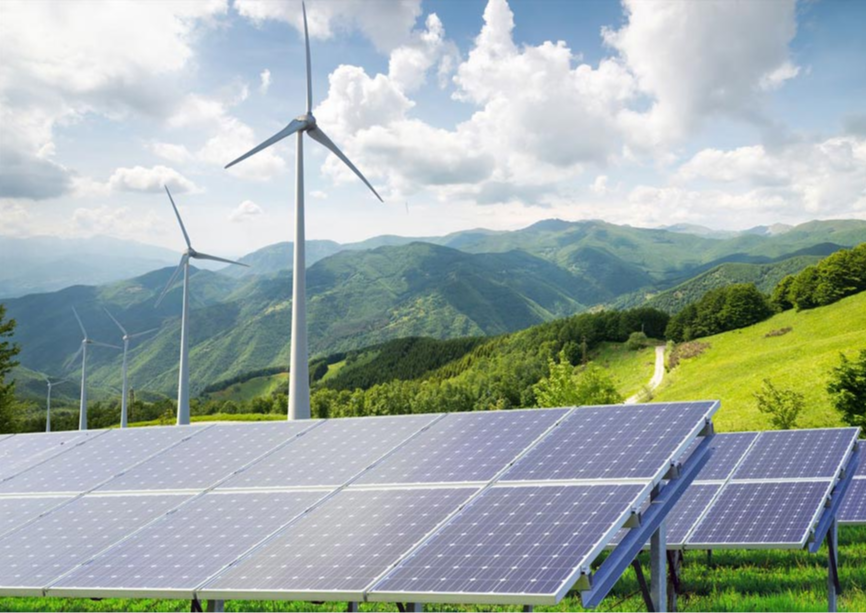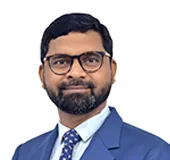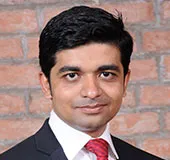
Presently, India is the third largest producer and consumer of electricity worldwide. With 425+ GW of installed capacity, 430+ thousand circuit kilometres of transmission lines, and 1500+ billion units of electricity supplied in FY 2023, it is among the most critical and complex electricity ecosystems. To fulfil the country’s ambition of becoming a developed country by 2047 and providing affordable and sustainable power for all, its generation capacity is expected to reach 777 GW by 2030. As per the updated targets, its Nationally Determined Contributions (NDC) aims to source 50 percent of this power from non-fossil-fuel-based sources. To achieve this target, its power value chain players must adopt new-age digital technologies to overcome numerous electricity integration challenges.
Solving for time, place, and quantity
The clean energy ecosystems of the future will encompass a wide spectrum of generation facilities—giga-scale solar/wind/hybrid power parks right up to micro-scale distributed generation initiatives in rooftop solar, wind, biomass, hydro, tidal, etc. Such a fundamental transition from fossil fuels to clean but intermittent and variable energy sources will fundamentally change the characteristics of the supply side. On the transmission front, upcoming large-scale clean power generation facilities are typically located away from the traditional consumption centres due to factors such as the availability of high solar irradiation and wind speeds, contiguous unused land parcels, availability of water for green hydrogen, etc. This necessitates the setting up of massive greenfield transmission assets along hitherto unconnected locations while augmenting the capabilities of existing power grids.
Upcoming large-scale clean power generation facilities are typically located away from the traditional consumption centres due to factors such as the availability of high solar irradiation and wind speeds, contiguous unused land parcels, availability of water for green hydrogen, etc.
On the consumption side, the peak power demand by 2030 is expected to reach 335 GW. This demand will be increasingly characterised by ‘smart’ devices with capabilities of real time optimisation of power consumption. Therefore, to solve the evolving challenges of ‘time’, ‘place’, and ‘quantum’ in a country’s new-age energy landscape, it is only natural that establishing an integrated ‘digital twin’ (DT) capability for managing the country’s generation, transmission, and distribution networks is taken up expeditiously.
Why do we need ‘digital twin’?
A DT can be described as a dynamic simulated imitation of a real asset, process, or ecosystem. It has the exact visualisation and behavioural traits as its real-world counterpart. Emerging technologies such as the Internet of Things (IoT), artificial intelligence (AI), and blockchain can further enhance the accuracy and granularity of a DT. By design, it continuously learns from a live stream of data about/sourced from the real-world counterpart and simulates its probable responses to various inputs/digital stimuli. Thus, it can predict possible real-world performance outcomes and issues with a very high level of accuracy. Therefore, if a DT of the country’s electricity ecosystem is created, it can integrate and analyse real-time, giga-scale, variable renewable energy generation, transmission, and consumption data.
As observed in the real world, the peak generation of renewable energy (RE) assets may not always match the moments of peak demand. A DT can simulate such scenarios at local/regional/national levels and provide accurate recommendations to manage such imbalances. Such a forecasting capability can help cut costs, increase efficiency, build resilience, and reduce the carbon footprint of grid operations while providing an invaluable training resource for upskilling the workforce. With the launch of the Pradhan Mantri Suryoday Yojana 2024, DT can facilitate ‘virtual power plants’ that benefit communities and grids by unleashing new revenue opportunities.
Emerging technologies such as the Internet of Things (IoT), artificial intelligence (AI), and blockchain can further enhance the accuracy and granularity of a DT.
Due to DT’s inherent predictive maintenance features, it can trigger advanced rectification responses, thus minimising safety concerns. It can lead to accurate price discovery in the evolving institutional and peer-to-peer energy trading markets and easy integration with energy storage and e-mobility service providers. Simultaneously, it can enable greater transparency and accountability in the trade of offsets and renewable energy certificates.
Global trends in digitisation of energy ecosystems
According to the International Energy Agency (IEA), developed countries are taking significant strides towards infusing state-of-the-art DT models in the conception, execution, and management of their electric systems. With a focus on pan-Europe grid integration, harmonisation of new investments, and facilitating interoperability across jurisdictions, the European Union embarked on a focused plan in 2022 to create advanced digital capabilities in this domain. This initiative aims to provide more control on the sourcing and usage of energy to its consumers through data-driven insights, facilitate upgradation to smart-grid technologies, and beef up cyber security measures. In the United Kingdom, an interdisciplinary task force consisting of representatives from the departments of industry, energy, and business, along with the regulatory body (OFGEM), is creating an implementation roadmap for comprehensive digitisation of the sector. In the United States, the Southern California Edison utility company is running several pilots as a precursor towards bringing its smart grid to life through advanced digital technologies.
With a focus on pan-Europe grid integration, harmonisation of new investments, and facilitating interoperability across jurisdictions, the European Union embarked on a focused plan in 2022 to create advanced digital capabilities in this domain.
The IEA states that, globally, new-age digital solutions have the potential to optimize US$ 1.5+ trillion in grid investments by 2050. Additionally, they can increase the lifetime of grid infrastructure, while facilitating the seamless integration of clean energy. On the flip side, the collective failure to infuse digital solutions in existing and upcoming power networks could manifest in increased supply side disruptions. This can adversely impact economic productivity by more than US$ 1 trillion in emerging and developing markets and lead to suboptimal outlays on power management infrastructure. Hence, developing DT capabilities should be considered as an investment that unlocks innovations and real values for all stakeholders of the energy ecosystem. By leveraging it, energy producers can expect better returns on investments, trading companies can earn predictable margins, governments and regulators can get accurate policy cues, distribution/transmission companies are able to optimise their capex by managing their networks more efficiently, and consumers can get cheaper, cleaner, and reliable power.
Labanya Prakash Jena is Head at the Centre for Sustainable Finance, Climate Policy Initiative (CPI).
Prasad Ashok Thakur is a CIMO scholar and an alumni of Indian Institute of Management, Ahmedabad (IIMA) and Indian Institute of Technology, Bombay (IITB).
The authors' views are personal and do not represent their employers
The views expressed above belong to the author(s). ORF research and analyses now available on Telegram! Click here to access our curated content — blogs, longforms and interviews.




 PREV
PREV



